How to DJ a private party
Tips and tricks for private party DJs
DJing at private parties can be both an exciting and rewarding experience.
As a DJ, your main objective is to create a memorable atmosphere and keep the guests entertained throughout the event.
To achieve this, it’s essential to be prepared and know the ins and outs of how to be the best DJ for a private party.
This article provides tips and tricks for those looking to impress at their next private party booking.
If that’s you then lets jump on in.

Understanding the Party Type
Knowing the type of event you’ll be DJing is crucial for setting the tone and choosing the right playlist.
Different types of parties require varying styles of music and atmosphere. Some common events you may encounter as a DJ include House Parties, Weddings, Corporate Events, and Proms.
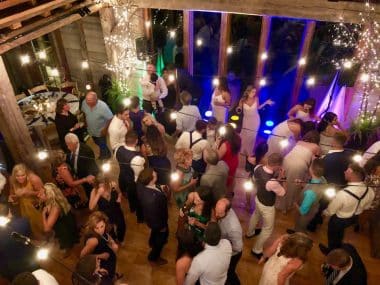 Adjust your selection and performance style to suit the ambiance of each occasion. For instance:
Adjust your selection and performance style to suit the ambiance of each occasion. For instance:
- House Parties: Opt for a mix of popular hits, upbeat tunes, and danceable tracks that cater to a diverse crowd.
- Weddings: Balance romantic and nostalgic songs along with energetic dance floor fillers, considering the couple’s preferences.
- Corporate Events: Maintain a professional yet engaging atmosphere, opting for background music or mixing in some lively tracks to keep the guests entertained.
- Proms and school events: Focus on current chart-toppers and popular dance tracks, ensuring the young crowd stays engaged and enthusiastic.
Researching Music Preferences
Before DJing a private event, it’s important to familiarise yourself with the tastes and preferences of the attendees.
Some possible steps to research their preferences include:
- Collect preferences in advance: Ask the event organisers for input to create a list of preferred tracks and genres.
- Demographic analysis: Gather information on the age range, ethnicity, and background of attendees to predict their musical tastes.
- Observe the crowd: During the event, pay attention to audience reactions to different tracks, adjusting your mix accordingly.
Mobile DJ or Club DJ
When it comes to DJing at private parties, it’s important to understand the different roles and requirements of a Mobile DJ versus a Club DJ.
Each of these roles has its own distinct approach, which can significantly influence the kind of experience you deliver at the event.
Mobile DJ: A Versatile Entertainer
As a Mobile DJ, versatility is key.
Mobile DJs are expected to handle a variety of music genres and cater to diverse events, whether it’s a wedding, a corporate event, or a house party.
This means being able to read the room and adapt your music selection to fit the atmosphere and the preferences of the guests.
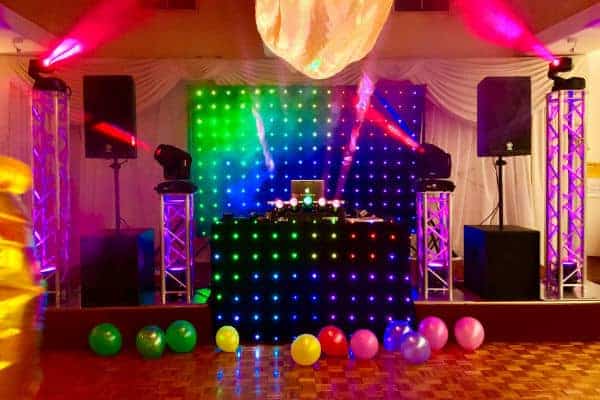
A significant part of a Mobile DJ’s role also involves investing in their own equipment.
This includes sound systems and lights, which need to be portable and adaptable to different venues.
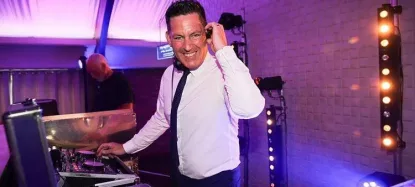 Moreover, transportation is a crucial consideration, as you will need to bring your equipment to and from each event.
Moreover, transportation is a crucial consideration, as you will need to bring your equipment to and from each event.
Additionally, Mobile DJs often take on the role of an announcer or event MC.
This means you’re not just providing music, but also facilitating the event, making announcements, and ensuring the party runs smoothly.
This added responsibility requires excellent communication skills and a certain level of charisma to keep the guests engaged and the energy high.
Club DJ: A Specialised Performer
On the other hand, a Club DJ typically specializes in a specific music style or genre. As a Club DJ, you’re often catering to a particular scene or venue, meaning your music selection might be more narrowly focused compared to a Mobile DJ.
Unlike Mobile DJs, Club DJs usually don’t need to bring their own equipment to the event. Instead, they use the club’s sound system and light setup.
This means less logistical planning on your part, but it also requires familiarity with different types of club equipment and the ability to adapt to various setups.
The focus of a Club DJ at a private event is to create a seamless musical journey that aligns with the club’s theme or vibe.
This involves expertly using beat-matching techniques and transitions to maintain a consistent flow and keep the dance floor moving. As a Club DJ, your role is less about facilitating the event and more about crafting a unique and immersive musical experience for the guests.
The first key aspect to consider when DJing at a private party is understanding your audience. The music you play should cater to the tastes and preferences of the party-goers, which may differ depending on the age group, cultura
If you’re gearing up to DJ a private party, your first priority should be getting to know your audience.
Remember, the music you’re playing is all about their tastes and preferences, which could be all over the map depending on who’s at the party.
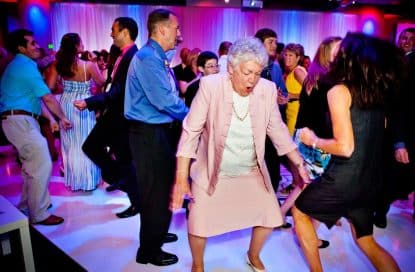 Age groups, cultural backgrounds, social circles – they all play a part in what music will get people on the dance floor.
Age groups, cultural backgrounds, social circles – they all play a part in what music will get people on the dance floor.
Having a diverse music selection on deck is absolutely crucial. You’ve got to be ready to switch up your playlist and adapt to the party’s vibe. It’s all about keeping the energy up and making sure everyone is having a great time.
And don’t forget about your sound system – it’s more important than you might think. A solid sound system can really help create the perfect atmosphere and keep your audience engaged. After all, even the best music can fall flat if it’s not coming through loud and clear.
Another thing that can make or break your success as a DJ is your ability to read the room. Pay close attention to how your audience reacts to different tracks. If you see them getting into the groove, keep the momentum going.
If not, don’t be afraid to switch it up. This skill comes with experience, and private parties are a perfect opportunity to get some practice in.
Keep these tips in mind, and you’ll be well on your way to DJing a private party that everyone will be talking about for weeks to come!
DJ Controllers and Software: The Heart of Your Setup
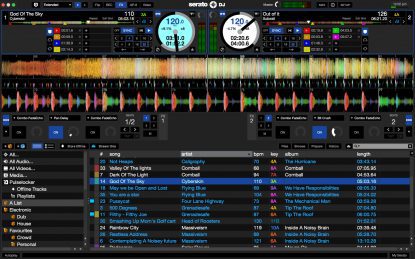 The centerpiece of your private party DJing setup is undoubtedly your DJ controller and software. Your controller is like a conductor’s baton, guiding the music and controlling numerous software functions.
The centerpiece of your private party DJing setup is undoubtedly your DJ controller and software. Your controller is like a conductor’s baton, guiding the music and controlling numerous software functions.
The software itself, meanwhile, is your access key to essential features such as cue points, effects, and loops. Popular options like Serato, Traktor, and Rekordbox are worth checking out.
Just remember that compatibility between your controller, software, and laptop is vital to ensure smooth operation.
Speakers and PA System: Setting the Sound Stage
The quality of your sound experience heavily relies on your speakers and PA system.
Depending on the venue’s size and acoustics, your choice of speakers should be able to deliver clear and robust sound.
For private parties, a portable PA system, which typically includes speakers, an amplifier, and a mixer, can be a fantastic asset. The key is to balance the speaker size and power according to the room’s requirements.
Headphones and Microphones: Tools for Precision and Engagement
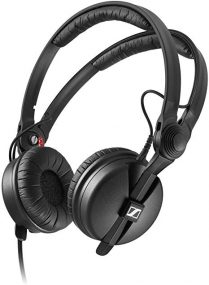 Its hard to function as a DJ without a good pair of headphones, essential for pre-listening and beat-matching tracks.
Its hard to function as a DJ without a good pair of headphones, essential for pre-listening and beat-matching tracks.
We’ve explored the idea of DJing without headphones here and while it technically can be done, I highly recommend you get a good pair of headphones for the types of parties you’ll be DJing.
Opt for headphones with a closed-back design for superior sound isolation and comfort during long gigs.
Alongside headphones, a clear-sounding microphone is indispensable for engaging with your audience, making announcements, or hyping up the dance floor.
Power and Cables: Keeping Everything Connected
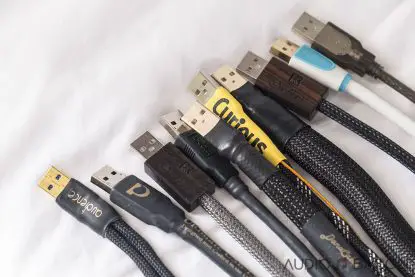 Your DJ setup is only as reliable as your power and cable management.
Your DJ setup is only as reliable as your power and cable management.
Ensure you have all necessary power strips, extension cords, and a variety of audio cables (like XLR and RCA) to connect your equipment.
Always have spares on hand and use a surge protector to safeguard your gear against power spikes.
Accessories: The Finishing Touches
Lastly, don’t overlook essential DJ accessories. Sturdy cases or padded bags are a must for protecting and transporting your gear.
A laptop stand can streamline your setup, and USB flash drives can serve as a music backup or for use with other compatible DJ gear.
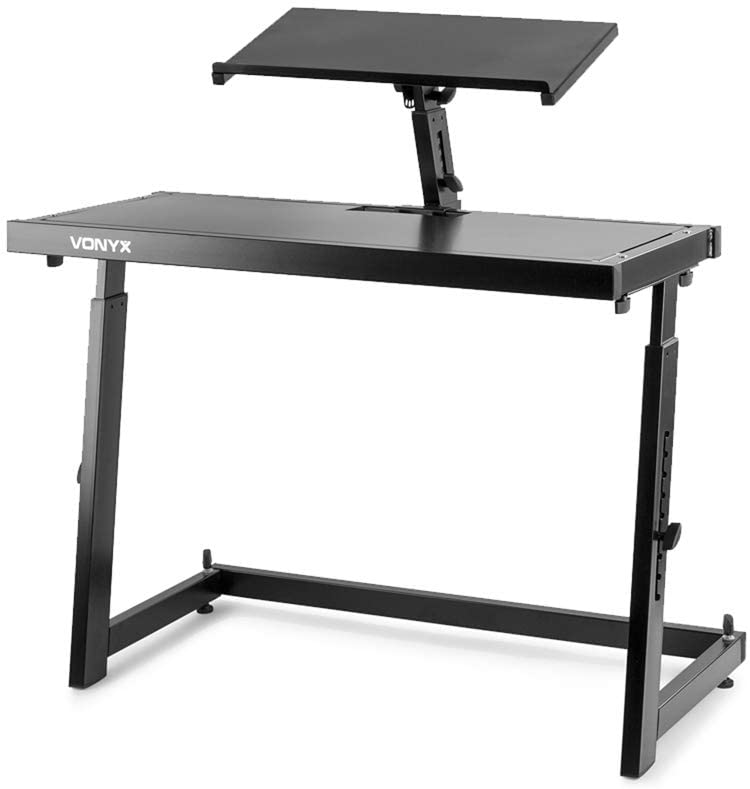
Keeping your cables tidy with cable ties and organizers will help maintain an orderly and efficient workspace.
By investing in the right DJ equipment, you’re setting yourself up for a memorable and professional performance at any private party.
When it comes to being a successful DJ, variety is the spice of life. The key to keeping your audience engaged lies in building a song library as diverse as the people on the dance floor.
Start by researching current chart-toppers and timeless classics across a variety of genres – pop, rock, electronic, hip-hop, you name it.
Don’t be afraid to explore lesser-known tracks that could set a unique mood. Streaming platforms like Spotify or Apple Music are your allies here, helping you curate playlists and discover new songs. To keep things organized, try grouping your songs by genre, era, or mood – this can be a lifesaver during a live set.
Reading the Crowd: The Art of Adaptation
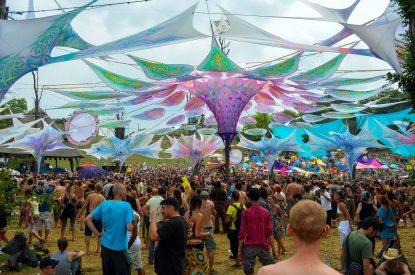 DJing isn’t just about playing songs; it’s about playing the right song at the right time. The secret sauce? Reading your audience and adjusting your music to match their vibe.
DJing isn’t just about playing songs; it’s about playing the right song at the right time. The secret sauce? Reading your audience and adjusting your music to match their vibe.
Pay attention to how the crowd reacts to different tracks – which songs get them moving, singing, or pumping their fists in the air?
We’ve written an awesome in-depth article on the subject of Reading the crowd and why its the number 1 skill you need to have. Use song requests as a guidepost for the kind of music your audience wants to hear. And if a track falls flat, don’t be afraid to change the tune rather than playing the entire thing. Be ruthless and move on, the crowd will thank you for it.
Not every song you love will be a hit with your audience, and that’s okay.
Beatmatching and Transitions: Making the Magic
Beatmatching and transitions are the magic tricks up every DJ’s sleeve. They turn a series of songs into a seamless experience.
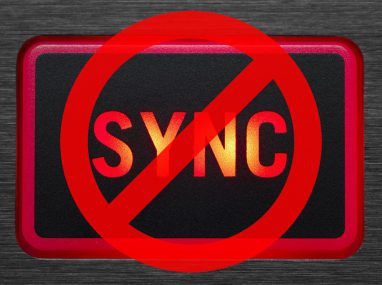 With beatmatching, you’re syncing up the tempos of two tracks, a skill you’ll fine tune over time so don’t worry if its not that easy to start with. Remember practice makes perfect! Check out our guide to learning how to beat match here.
With beatmatching, you’re syncing up the tempos of two tracks, a skill you’ll fine tune over time so don’t worry if its not that easy to start with. Remember practice makes perfect! Check out our guide to learning how to beat match here.
Challenge yourself by trying to match tracks of different genres and BPMs.
Transitions, on the other hand, involve smoothly blending one song into another. Mix things up with different techniques using the volume faders, EQ adjustments, and filter sweeps. Reverb and delay can be your best friends for making transitions more exciting too.
Remember to set cue points to mark when to mix, and always consider the energy of the songs when transitioning between them. We’ve written an entire article on advanced DJ transitions here for you to enjoy.
When you master music selection, crowd reading, beatmatching, and transitions, your DJ sets will level up, and your private party gigs will be a hit every time.
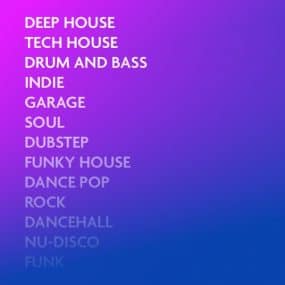 The genres and subgenres you spin at a private party can make or break the atmosphere.
The genres and subgenres you spin at a private party can make or break the atmosphere.
High-energy styles like house, EDM, and mainstream dance are perfect for getting the crowd moving. But remember, it’s all about the audience’s preferences.
Take the time to explore popular subgenres within these broader categories, and don’t shy away from experimenting with unique blends and transitions. You’re not just playing music, you’re crafting an experience.
Tailoring the Tunes: Understanding Your Audience
Knowing your audience’s music taste is crucial to creating the right vibe.
Whether you’re DJing for friends, family, or colleagues, do your homework about their music preferences before the event.
If your audience is a mixed bag, diversity is key.
A well-rounded playlist should have a variety of genres, subgenres, and tracks suitable for all ages.
By catering to everyone’s taste, you’ll create an atmosphere that everyone can groove to.
The Old and the New: Balancing Classics and Chart-Toppers
Finding the sweet spot between classic tracks and today’s hits is the secret to keeping the dance floor alive.
Nostalgic hits might get people singing along, but sprinkling in some fresh releases keeps the energy high.
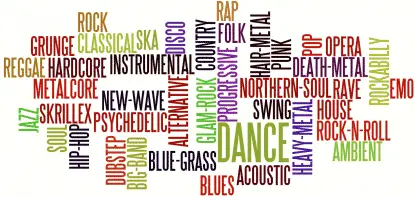 Create a playlist that combines timeless favourites with the latest chart-toppers in your chosen genres.
Create a playlist that combines timeless favourites with the latest chart-toppers in your chosen genres.
By seamlessly switching between different eras, you’ll keep your crowd engaged and entertained throughout the party.
Remember people like surprises. Throwing a classic hit from years ago, in with the latest tunes just charting can really make for a memorable set.
Here’s an awesome video on how to deal with drunk guests at private parties. Something you’ll definitely encounter at some point!
As a DJ, you’re not just playing tunes. You’re also the party’s guide, and sometimes, its MC.
Whether it’s introducing the couple’s first dance at a wedding or announcing a raffle draw at a fundraiser, your lively and fun announcements help set the party’s tone.
By keeping guests in the loop and pumping up the atmosphere, you become an essential part of the event’s flow.
Handling Song Requests
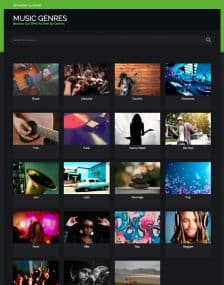 Guests love hearing their favorite songs, so managing song requests is a crucial part of your gig.
Guests love hearing their favorite songs, so managing song requests is a crucial part of your gig.
But how do you juggle requests with your planned playlist? Easy, keep an iPad handy for guests to request songs, while you maintain a curated playlist for the event. When dealing with requests, remember to:
- Check if the requested song fits the theme, tempo, and crowd’s vibe.
- Prioritise requests that vibe with the party’s energy.
- Politely turn down requests that don’t match the mood of the event.
Energising the Dance Floor
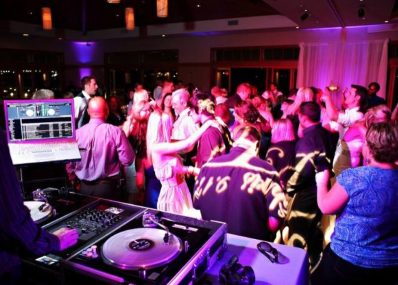 As a DJ, your main task is to keep the dance floor buzzing. Mastering the art of reading the crowd lets you gauge the room’s energy and adjust your song choices to match.
As a DJ, your main task is to keep the dance floor buzzing. Mastering the art of reading the crowd lets you gauge the room’s energy and adjust your song choices to match.
Here’s how you can maintain a lively atmosphere:
- Gradually up the tempo to build energy throughout the night.
- Mix crowd favourites with fresh tracks that’ll get people moving.
- Pay attention to the crowd’s reaction to each song and tweak your playlist as needed.
By staying in tune with the audience’s energy, handling song requests tactfully, and keeping the dance floor alive, you can make every gig a hit.
Here’s some more great advice on handling song requests.
House Parties and Private Functions
Being the DJ at house parties and private functions is all about tapping into the mood of the crowd. You’re not just spinning tracks, you’re curating an atmosphere that amplifies the joy and camaraderie of the event.
So stay alert and take the pulse of the party. See a group reminiscing about the good old days? Perhaps it’s time to drop in some golden oldies. Or maybe there’s a surge of energy that calls for a current pop hit? Being adaptable is the key. The more you can flex your playlist to match the vibe, the more you’ll keep the partygoers moving and the evening buzzing.
Corporate Events: Striking a Professional Chord
When it comes to corporate events, the tone can be a tad more formal, but that doesn’t mean it has to be stiff.
It’s all about finding the perfect balance between professionalism and entertainment. The key here is subtlety.
Keep the volume at a level that allows for conversations to flow, but still lets the music be a lively backdrop. Until you’re informed they want it cranked up!
Choose a mix of refined tunes for background music that can easily give way to more upbeat tracks when it’s time for folks to let their hair down.
And remember, punctuality is paramount. Stick to the event’s schedule, and you’ll earn the respect of the organizers and the attendees.
Weddings and Receptions: Celebrating Love with Music
There’s something magical about DJing at weddings and receptions. It’s not just about playing music, it’s about contributing to someone’s once-in-a-lifetime moment.
You’re creating a sonic tapestry that will backdrop memories for years to come.
So, you’ll want to bring your most versatile self. From classic love songs that tug at heartstrings to dance tracks that get people up from their seats, you’ll be curating a mix that pleases every guest.
And keep in mind, communication is crucial here.
Understand the couple’s or the wedding planner’s preferences and be sensitive to any cultural or religious customs. We’ve got an entire article dedicated to being a better Wedding DJ here.
Proms and School Events: Keeping Up with the Beat
DJing at proms and other school events is about staying current and connecting with the dynamic energy of a younger crowd.
It’s a unique opportunity to blend chart-toppers with timeless dance classics that can get everyone, from the wallflowers to the party animals, onto the dance floor.
The atmosphere should be continuously energetic and engaging, encouraging crowd interaction and ensuring that the event is an unforgettable one.
So, go ahead and tune into the youthful vibe, and you’ll have them dancing till they drop!
Setting up your DJ booth is not a simple matter of plugging in your gear and pressing play. It’s an art that begins way before the party, when you first set your eyes on the location.
You’ll want to get a sense of the space where the party will be happening, checking out everything from the room’s size and shape to where the power outlets are located.
I recommend you have a think about if the available area is big enough to comfortably fit your DJ setup, speakers, and the party crowd. Cramped conditions for anyone are not much fun.
Take note of the floor – is it even and stable enough for your gear? You wouldn’t want a jumping crowd to make your turntables skip or knock over your speakers or lights. Also, keep an ear out for noise levels especially outside the room you’re playing. How far does the sound travel? Will it disturb neighbours that could shut down the party early? This is true regardless of the venue type, whether its a house party, corporate office ,outdoor venue, hotel function room. They all have noise restrictions and sound can leak from doors, windows and open spaces.
Are there any noise restrictions that might put a damper on your sound? Some venues have a strict decibel level they are not allowed to exceed. Ask the venue own if they have one before the start of the gig.
Remember, every location has its unique characteristics, so it’s crucial to know these details to set up an ideal DJ space.
Arranging Equipment and Cabling
When you’ve got the location down pat, it’s time to think about arranging your gear. A neat and orderly setup isn’t just pleasing to the eye; it’s essential for preventing mishaps and ensuring a smooth performance.
Let’s talk about equipment placement first. Your DJ controller or mixer, laptop, and turntables should be easily accessible and within arm’s reach.
You want to be able to react quickly and intuitively as the party progresses.
Next up, think about the speakers. Position them strategically so that the sound is evenly distributed throughout the space y. If possible, raising the speakers can help our crowd will be in. maintain sound quality in that space. You like have directional speakers so you can point your sound system to focus the audio at your dance floor area. Try not to point your speakers towards any doors that might be frequently used.
Then comes cabling, which can be a DJ’s worst nightmare if not managed properly.
You need to make sure you’ve got the right cables to hook up your gear to the sound system, including the correct power cables. That’s pretty obvious I know but do you have spares for every cable? What if one of your cable stops functioning? We’ve written an in-depth article giving you the ultimate checklist to save any gig. Well worth a read.
Will you have backups ready to go should one of your cables fail? Repeated used of cables, frequently unwound, used and then wound up again can cause fatigue so expect them to fail at some point and need replacing. This can potentially happen before or during the gig so I recommend always having backups!
Nothing kills a party faster than a faulty cable!
Once you’re connected, bundle and secure loose cables with cable ties or gaffer tape. I recommend you avoid using duct tape as it can leave residue and be a nightmare to remove. Having said that, tape is really your savour at DJ private parties as it can tidy up any DJ space and keep cables out of the way of guests.
Lastly, avoid setting up cables in high-traffic areas or places where they might cause someone to trip.
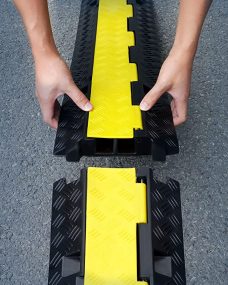 If it’s unavoidable, use cable protectors or tape cables down for safety.
If it’s unavoidable, use cable protectors or tape cables down for safety.
By taking the time to scout your location and thoughtfully arrange your gear and cabling, you’re setting the stage for a party that’s not just successful but memorable. It’ll also help your DJ gear last longer with less chance of it breaking at a critical moment.
And there you have it! Everything you need to know to rock any private party as a DJ. We’ve covered everything from choosing the right gear, building a diverse song library, understanding different audiences, and of course, perfecting your beat-matching and transition techniques.
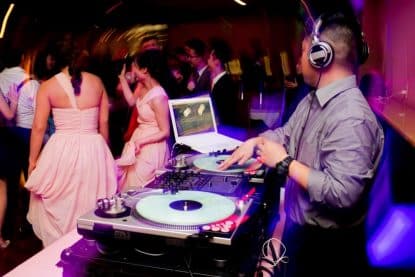
Remember that your DJ controller and software are your trusty sidekicks, ready to help you create the perfect mix, and don’t forget about the importance of a top-notch PA system and a sturdy pair of headphones.
We’ve also touched on how important it is to get to know the crowd, adjusting your set based on their energy and preferences. Each party, whether it’s a casual house gathering or a more formal corporate event, requires a unique approach to keep the atmosphere lively and the dance floor packed.
Striking the perfect balance between classic tracks and fresh hits is another critical aspect to keep the energy flowing and your audience engaged. Remember, a DJ’s role isn’t just about playing music. It’s also about creating memories through the atmosphere you cultivate.
And when it comes to setting up, don’t underestimate the value of scouting out your location and arranging your gear and cables. A smoothly running, well-organised setup can go a long way to ensure a successful gig.
So, whether you’re a seasoned DJ or just starting, remember this: Stay observant, adaptable, and let your passion for music shine through in every set. Private parties provide a unique platform for you to connect with diverse crowds and create unforgettable experiences.
Embrace the challenge, have fun, and keep the party going!
DJing help and advice
Wondering what to read next? Here’s what we think will help you the most.
